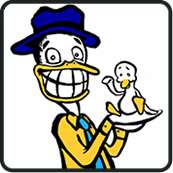The etymological definition of the word "photograph" is "transcribe light." It's easy to understand, therefore, that light is the most important element of photography. Here are some tips for mastering the light:
1. You should always be conscious of your light source, and compensate for low light with a flash (your camera will probably do this for you, but keep it in mind).
2. If you're outside, try to keep your back to the sun so that it illuminates your subject and doesn't throw a glare across your lens.
3. Watch for dark areas and shadows, and try to use a flash to "fill" them up. Many Automatic 35mm cameras have a "force flash" function which allows you to make the flash work even when the camera reads that there is enough light to expose the film. It is often better to seek out shadows or shoot on an overcast day and "force" your flash to fill the immediate subject with light and not have too much contrast, which can make for a harsh look.
4. The best lighting conditions are generally the early morning or evening. At high noon, the light is too "flat" or stark, which washes out the color and depth of the image.
5. Remember that the flash is only good for a maximum of 8 to 10 feet; a flash won't help you get those concert shots from the 15th row.
6. To cure "red eye" from flash photography, you can get a camera that has a "red eye double flash," or you can just ask all your subjects to look about a foot above your head.
SoYouWanna know more? Check out our full-length article SYW take great photographs?

